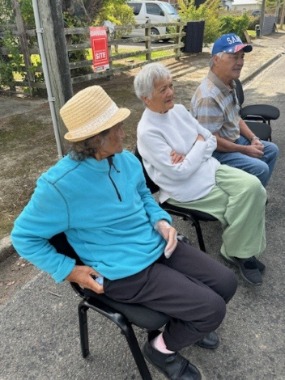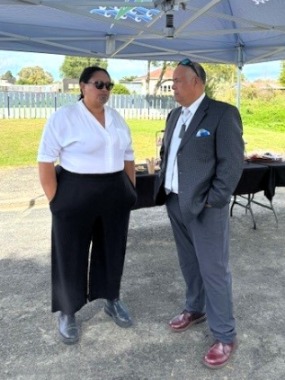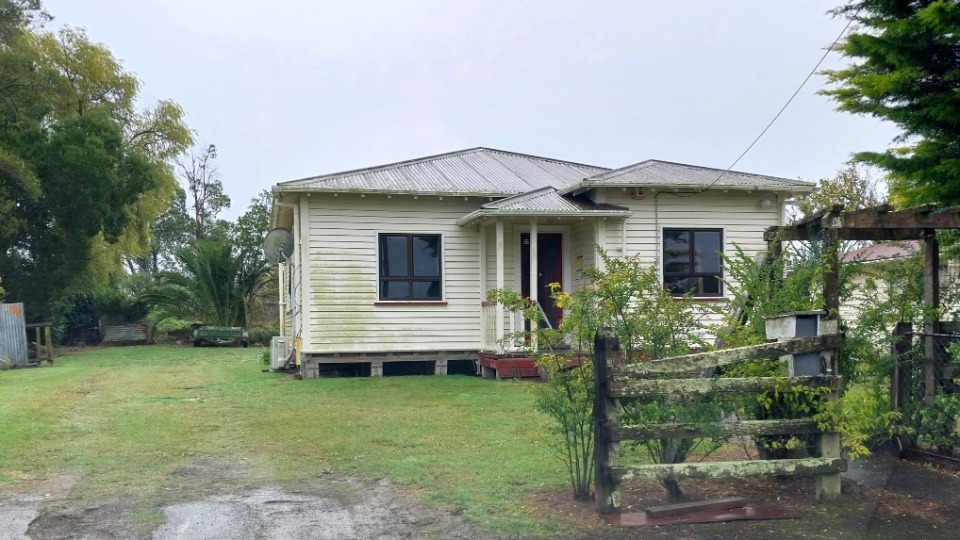Cyclone Gabrielle is only a scant memory in the minds of most people throughout the South Pacific. They remember that the wind blew, rain fell, and they were relieved when it was over.
But for many in New Zealand’s Hawke’s Bay, the 14 months since Gabrielle blew through the country have been long and agonizing. Billions of dollars’ worth of damage occurred, with thousands of hectares of beautiful orchards and vineyards destroyed, and roadways, bridges and railroads washed out.
- Living-Pods-for-Wairoa-Workers
- Wairoa-Worker-Pod
- Arama-Puriri-speaks-to-homeowners-at-project-kick-off
- Wairoa-Homeowners-express-joy-to-each-other
- Wairoa-home-to-be-restored,-with-temporary-housing-pod-next-to-it
| Temple Square is always beautiful in the springtime. Gardeners work to prepare the ground for General Conference. © 2012 Intellectual Reserve, Inc. All rights reserved. | 1 / 2 |
Thousands of people in the region are also still without permanent solutions to their damaged homes and properties. Each day these people face a variety of survival strategies: staying at a local marae (community facility), couch-surfing at a friends' house, holding forth in a caravan, or in an unoccupied batch (small dwelling) or government-provided pod.
For most of these survivors, living in any kind of permanent home remains a dream with little hope in sight.
Many of these families were underinsured or, in some cases, not insured at all when Gabrielle hit. Now their lives remain trapped in a no-man’s land of “who is responsible,” to help them repair their homes and get back to living in them.

Wairoa-Homeowners-Listen-to-Details
Owners of cyclone-damaged homes in Wairoa, New Zealand, listen carefully as the details of the restoration project are explained during the project kick-off event, 1 April 2024.© 2024 by Intellectual Reserve, Inc. All rights reserved.Add to this concern a severe shortage of skilled tradespersons to do the work of putting homes back together again. It's no wonder some have almost given up.
However, in the northern Hawke’s Bay town of Wairoa, help has arrived through a collaboration between The Church of Jesus Christ of Latter-day Saints and the Wairoa Council’s Recovery Group (WCRG). Beginning 1 April, the Church joined the WCRG in the effort to rebuild homes and lives.
Arama Puriri, Welfare and Self Reliance Program Manager, said the Church’s involvement sprang from a visit to Wairoa in August 2023 by Pacific Area President Peter F. Meurs, and Elder Jared V. Ormsby, Area Seventy (a regional leader).
They met with Wairoa Council leaders and local church and community organizers to learn the extent of the disaster recovery in this isolated community. Those meetings led to the Church’s offering to assist in finding ways to restore some of the homes devastated by flooding caused by Cyclone Gabrielle.
Puriri said meetings with the WCRG managers got underway in January, and the two organizations have been working together since then to develop a plan that could best use the Church’s assistance in the community. He said the WCRG identified the five most needful projects and turned them over to the Church’s team to restore.
All of the affected property owners are living in temporary accommodations on site, until their homes are ready to move back into.
The Church is bringing two things to this effort—organizational skills through its humanitarian and self-reliance services, and money needed to get trades crews on site, on the job, and making good things happen.
“Initially, the Church is going to assist with the completion of five homes severely damaged by Gabrielle, and owned by disabled or elderly individuals who were either uninsured or vastly underinsured and haven’t been able to get their homes rehabilitated,” said Elder Fred Morley, a Church humanitarian specialist from Hastings who is assisting on-site with this project.

Fred-Morley-with-local-Wairoa-Council-official
Elder Fred Morley, on-site manager for this project, visits with a Wairoa Council Recovery Group official at the kick-off event, 1 April 2024.© 2024 by Intellectual Reserve, Inc. All rights reserved.“But to get this work underway we had to get tradesmen on site who could complete this work, as they just were not available in the Wairoa area,” Morley explained. “So, the first thing we had to do was set up some temporary pods for our workers to live in, most of whom are coming to Wairoa from the Napier/Hastings area.”
Morley said crews will live in Wairoa, work non-stop for a week or so, and then go back to their homes and their own businesses until the next phase of work is ready. He said a lot of planning has been put in to ensure these workers are not in each other’s way as they complete each home.
“At any given time, we may have multiple trades working in the area and living in the pods sited at the Wairoa Chapel,” Morley said. “The three pods accommodate up to eight workers at a time, which is what we think will happen as the project progresses.”
He said that while the builders, electricians, plumbers and painters may all be on site at the same time, great effort has been put into planning their work so that they can complete it as efficiently as possible.
“When each of them has finished the planned work, they’ll go back to their own businesses in the Napier/Hastings area for a little while,” he explained. “Then, when we’re ready, they will come back to do the next set of homes we’ll have planned for them.”
Morley said the crews are playing catch up at the moment, looking to improve upon some of the work originally done in the initial phases of Gabrielle recovery. Last August, during their visit to the Wairoa area, Elders Meurs and Ormsby saw first-hand what the problems were and offered the Church’s help to get the most needed projects moving again.
“These people are the most vulnerable in the community—they’re aged or disabled, and they were unable to pay for this work to be done due to severe inability to pay for it themselves,” Morley reiterated. “And because they were left hanging after the first wave of help came and went, there are now trust issues we’re facing at the moment, that the work is actually going to get done this time around.”
“So, we have to make sure things are done right this time.”
He said that conversations with the homeowners have revealed that they are really weary of being in housing limbo and would like to get back into their own homes as soon as possible. Morley related the story of an eighty-five-year-old woman who told the Church’s building team that she just wants to get back into her own home so she can live out the remainder of her life there.
“That’s the kind of priority were tasked with—to get these houses sorted as quickly as we can so these people can have their lives back.”
And what does “getting these houses sorted” mean?
“We’re replacing all the electrical wiring, the insulation will be reinstated, the plumbing restored, and the interiors rebuilt—these homes will be brought up to current code and standards,” Morley explained.
“We think it’s the right thing to do, to bring these homes up to current specs, so these homeowners will never have to worry about them ever again.”
He expects each of the five homes will take two or three months to completely restore, and work plans have been choreographed to move as quickly as possible. In some cases, minor improvements will be made to make life better for the occupants, but most of the work is simple restoration.
“We hope when this project is complete, these homeowners will appreciate the effort that was undertaken by the Church and the Wairoa Council to restore these homes for people that had no other way to get it done,” Morley said.
“We feel like this is what the Saviour would have us do— combine our resources and our efforts with the WCRG to help to make these families and community whole at last.”
